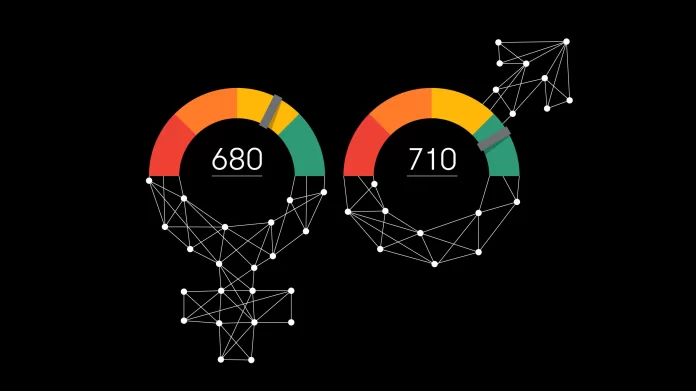When you are researching credit scores, you will see there are some differences that emerge when you consider gender differences in the United States of America. Credit scores greatly influence our lives, lifestyles, and financial future. No wonder the New York credit repair service providers are getting higher consultation requests recently.
Recently, some exciting research has gotten the light of the day where various factors including societal, economical, and individual, impact the credit scores. These results also highlight that the scores for both men and women are somehow different.
To see how the gender differences in credit scores of USA residents are present in 2023, this article will shed as much light as possible. You will find gender related credit score disparities in the USA are not uncommon based on the comprehensive analysis of this article.
Table of Contents
Gender Differences in Credit Scores: Factors at Play
To see how credit scores are unique for different genders, you must realize that gender-based discrimination and biases have been present in our society for a long time. Let’s talk about the ones that impact the credit score along with other factors, not part of the bias, that are also impacting this relationship below.
1. Income Disparities:
What to Look For
Studies have shown that men tend to earn higher incomes than women on average. Take any industry and check it. Even many people have said it on live camera that they have seen this happening. We are talking about big celebrities. These celebrities have shared that female actors were paid less as compared to their male counterparts in the same movie with equally strong screen time. A shame, really!
But how does it impact the credit score?
When one person is paid higher, their credit score increases as they have more money to pay their debts, return loans, pay interest, get premium insurance, buy a house, and so much more.
What to Avoid?
Oversimplification of the income gap is not required. It’s essential to consider various professions and industries where women might face more significant inequalities in earnings.
2. Credit Utilization Rates:
What to Look For
There is also another difference where women tend to use a smaller percentage of the credit that they have at any moment. This means that they also have a much lower credit utilization rate when you compare it with their male counterparts.
In other words, women tend to be more responsible, which also helps them have a better credit score in some circumstances. (We have used the word “sometimes” because other factors tend to come in the way more often than you may think).
What to Avoid?
Generalizations about spending habits should not be part of the discussion here. Individual financial behavior varies significantly and should be analyzed in a simple manner.
3. Debt-to-Income Ratios:
What to Look For
Women, especially those heading single-parent households, might face higher ratios of debt-to-income. This is possible because of the different levels of need of taking on significant financial responsibilities. Some will have more of it, while others will have it less.
What to Avoid?
Try to avoid assuming that all single-parent households have the same financial challenges. Socioeconomic backgrounds and other support systems play crucial roles as well.
4. Financial Literacy and Education:
What to Look For
Financial literacy is another factor. More men have the opportunity to get an education and financial literacy that helps them in their future. Credit financial skills have a significant influence on filling this gap.
What to Avoid?
Blaming individuals should be avoided. Systemic factors, including educational access and quality, definitely have a significant contribution to the level of financial literacy a person is getting.
5. Impact of Marital Status:
What to Look For
This factor may have a similar impact without gender differences because many couples opt for joint financial decisions nowadays. This helps in impacting their credit scores in a similar fashion.
Married individuals might experience joint financial decisions that impact their credit scores. But, the difference arises when there is a case of divorce or separation. In the case of such cases, it can lead to unique challenges for women in maintaining good credit.
What to Avoid?
Assuming all marriages have the same financial dynamics is wrong. Cultural, social, and economic factors influence marital financial strategies as well.
Conclusion
To summarize this article, understanding the gender differences in credit scores among the USA residents is not merely a statistical exercise. Instead, it is a crucial step toward creating and promoting financial equality.
When you acknowledge this important point, you will see that you have the power to get a better credit score if you focus on the factors and find better opportunities. Policymakers, financial institutions, and society as a whole can work towards bridging these gaps.
The gap here can also be minimized actually. You can help in decreasing the gap by:
- empowering women with financial education
- ensuring equal economic opportunities
- challenging societal norms that spread gender-based financial disparities
These are some of the integral steps in this transformative journey.
This is how we create a future where credit scores reflect individual financial behavior rather than societal biases.








